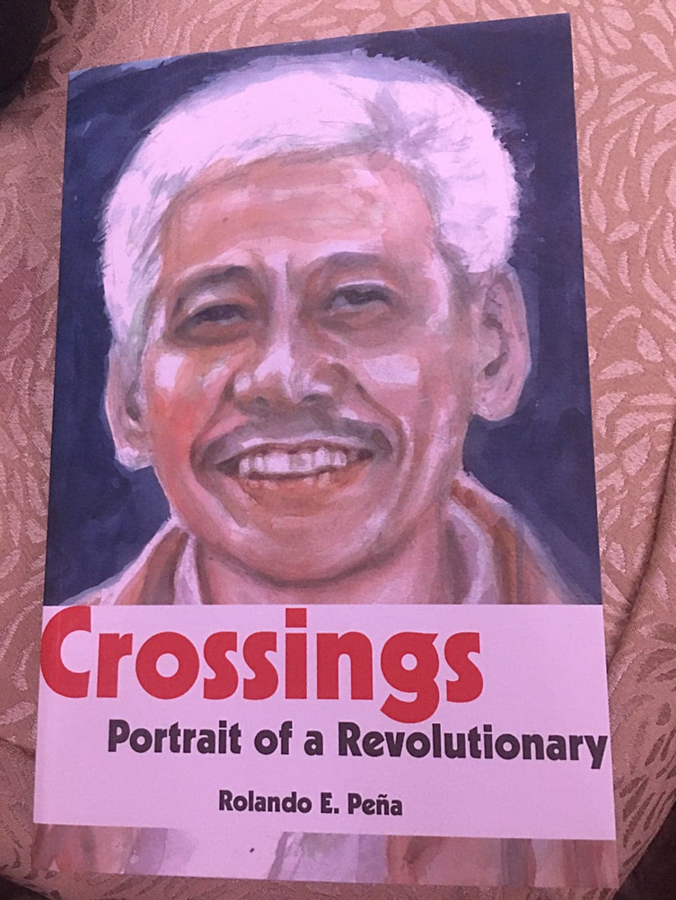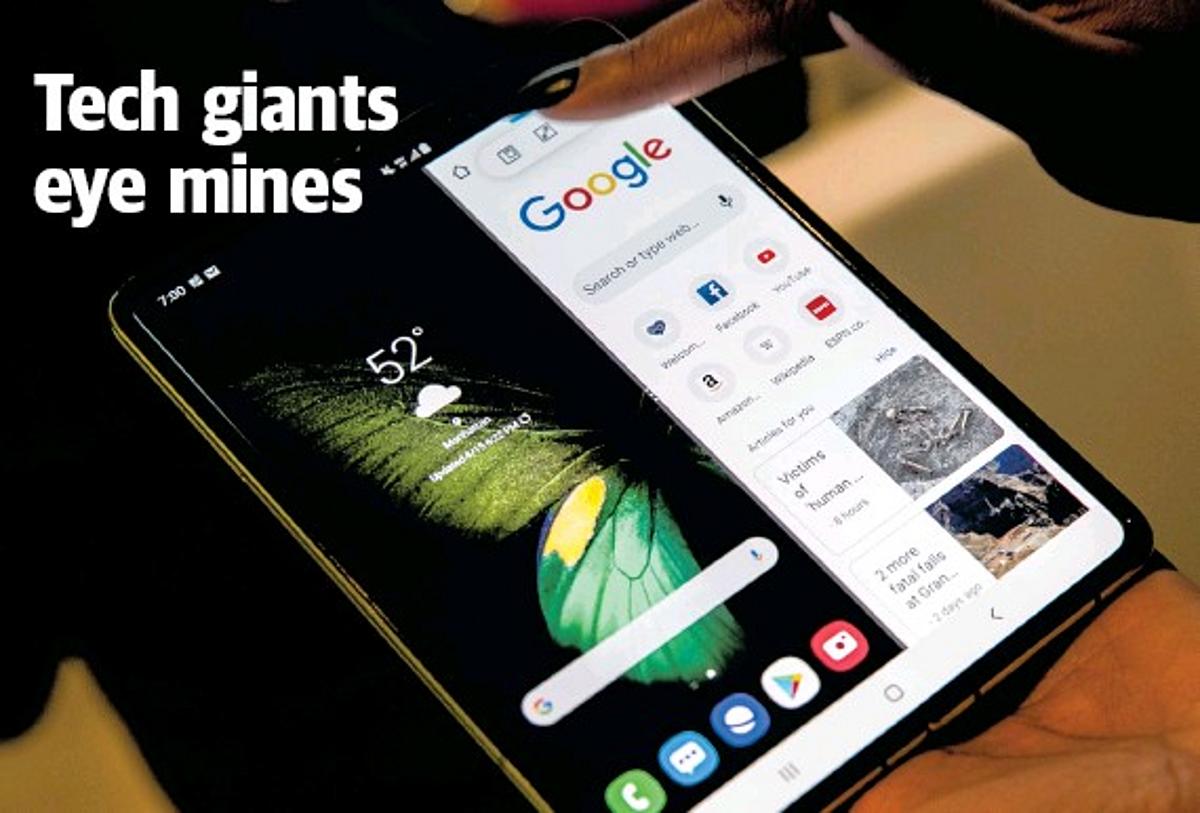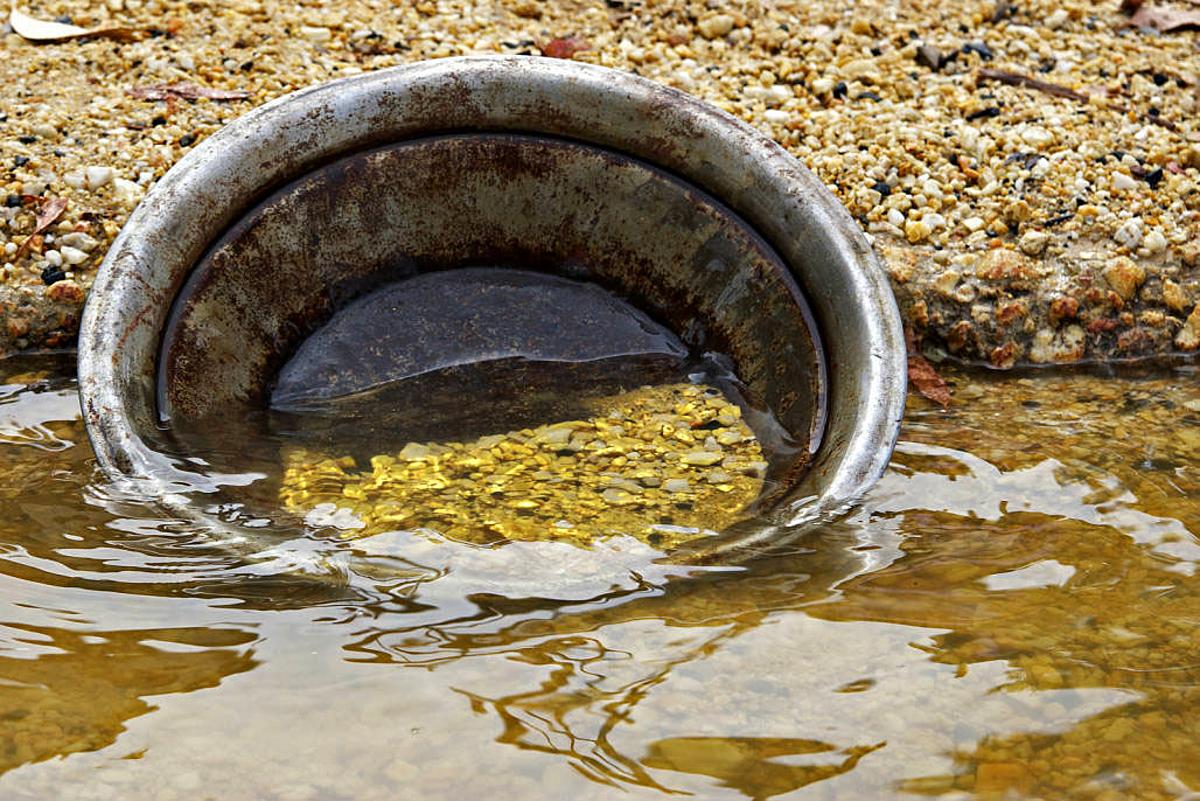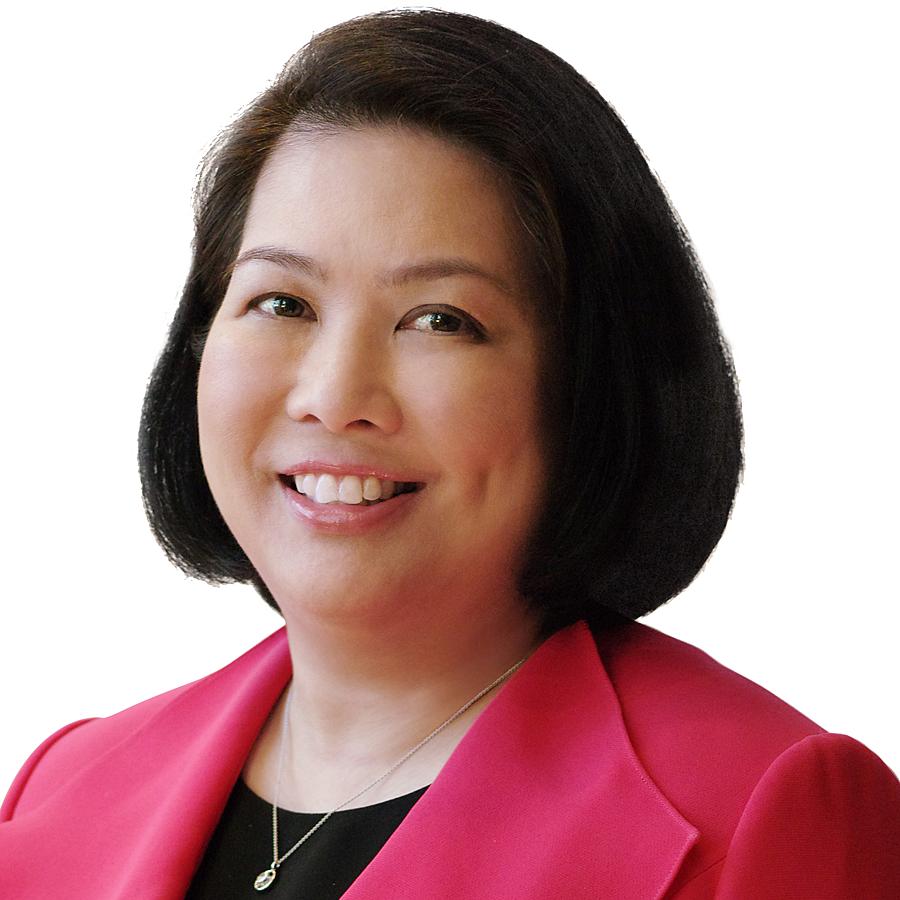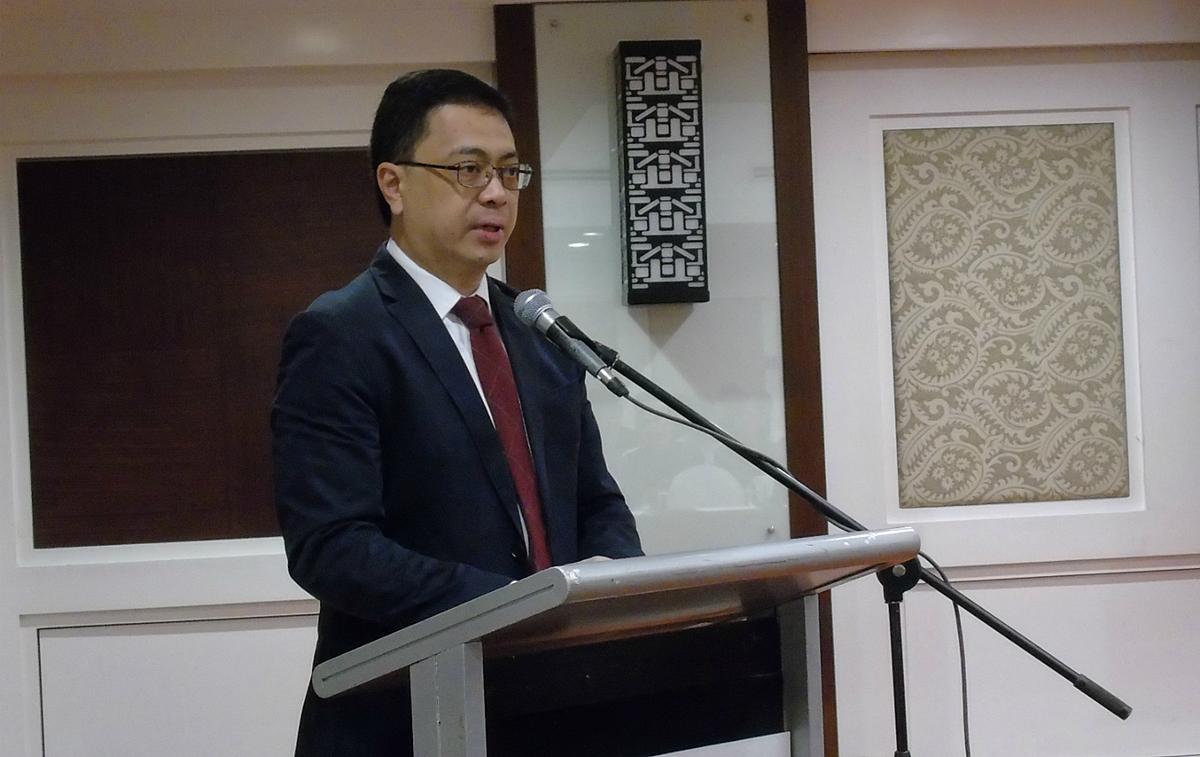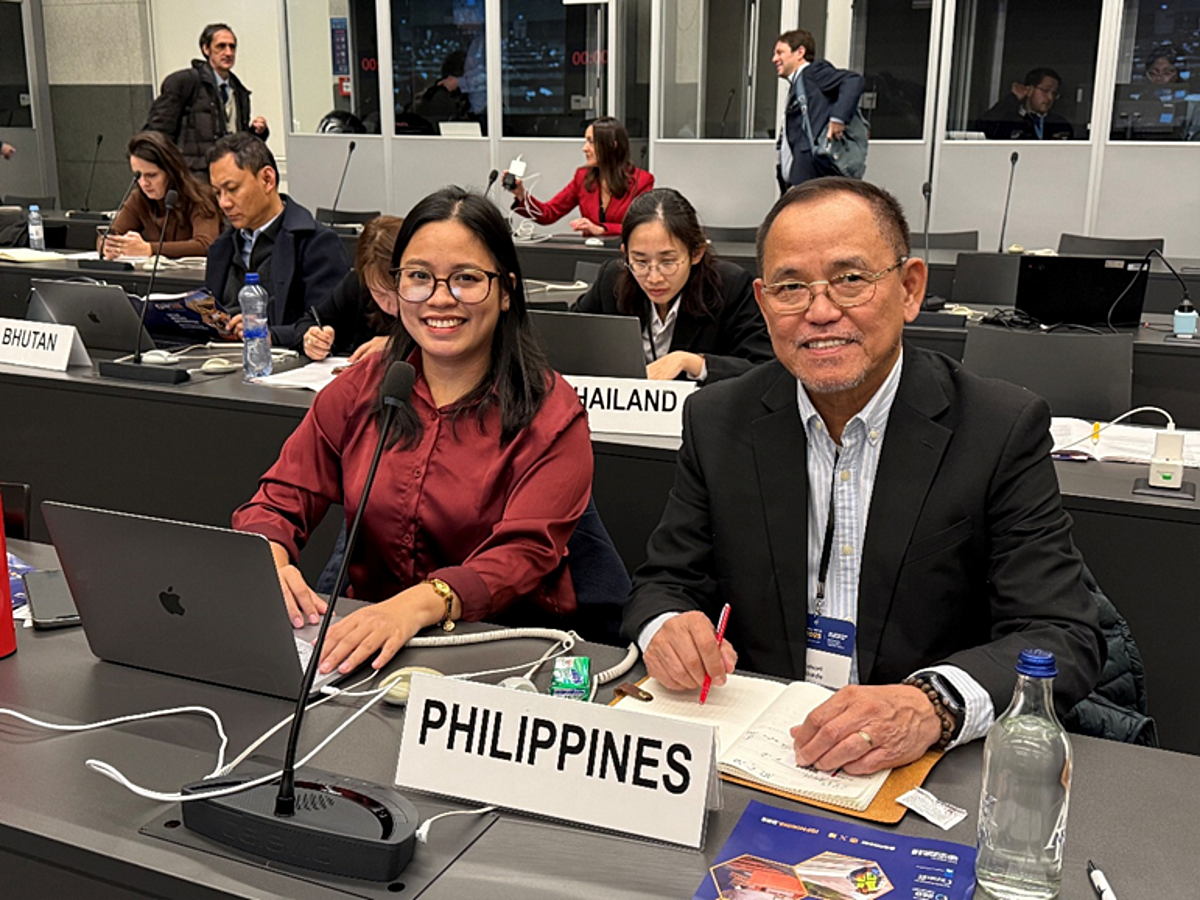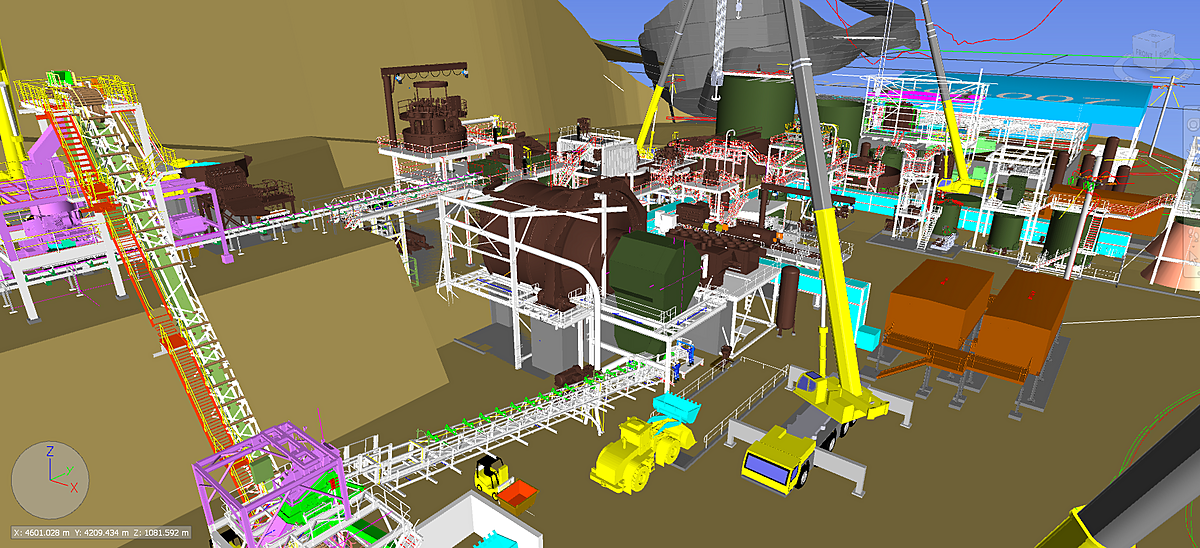In the morning of 04 December 2018, I received numerous text and viber messages from friends and colleagues from the tight-knit geoscience community informing me that Edwin Domingo, former Department of Environment and Natural Resources (“DENR”) Asst. Secretary, urgently wanted to get in touch with me. I thought that it might be a client referral. I was able to call Edwin and indeed he has a case for me. To my surprise, it was about Rolly Peña. A few days before, the community was abuzz with the news of Rolly’s tragic death from an accident involving a passing Grab motorcycle along a dark spot in Quezon Avenue. Edwin asked if I could volunteer to serve as legal counsel for Rolly’s daughter, Sybil Jade, in her forthcoming meeting with Grab. Edwin said that Dr. Manoling Ramos, a close friend and fraternity brother of Rolly, would be coordinating with me as Sybil, who was based in Germany as a doctor working for Médecins Sans Frontières(Doctors Without Borders), has yet to arrived in Manila for her father’s funeral services.
I whole-heartedly took on the opportunity to assist pro bono as my humble contribution to Rolly’s enduring legacy to the geoscience community. I have worked with him professionally on several occasions and considered him a stalwart in the resources industry. As fate would have it, I personally knew a high ranking executive in Grab and called him immediately. My friend in Grab was fully aware of the accident and he mentioned that his company was at that time trying to reach out to the nearest family member of Rolly. I disclosed that I was legally representing Rolly’s daughter and we discussed Grab’s offer of financial assistance.
I made arrangements for Sybil and I to meet with the Grab representative during the necrological service for Rolly at the National Institute of Geological Sciences (“NIGS”) in the afternoon of 06 December 2018. The meeting between Sybil and the Grab representative was initially frosty because while Sybil was obviously mourning the lost of her father, the Grab representative appeared to her as perfunctory in the discussions. To ease the tension, everybody decided to continue with the discourse after the memorial services.
When we continued our meeting, the Grab representative upon witnessing and hearing the eulogies given by Rolly’s friends, comrades, and colleagues, broke down into inconsolable tears. She was given a perspective on who Rolly was from the testimonials, his contribution to science and heroic struggle to fight for the oppressed. The parties finally came to an agreement and Sybil decided that she would use the assistance as seed money to preserve her father’s legacy.
Fast forward a year after, I attended the Christmas party of the University of the Philippines Geology Alumni Association held at the NIGS. I again saw Sybil and this time she was signing dedications on books. The book was a memoir of her father detailing his experiences in the Philippine communist revolutionary movement as an activist, guerrilla and political exile in China during the Martial Law years. It also contained poignant letters that Rolly wrote to Sybil when he resurfaced to the mainstream after leaving the underground movement. The last part includes a compilation of eulogies given during the necrological rites, newspaper editorials by colleagues, and articles written by people whose lives were touched by Rolly.
“Crossings - Portrait of a Revolutionary”
In the book, Rolando (“Rolly” or “Rol" to his close friends) Peña was variously described as a friend, mentor, comrade, linguist fluent in French and Mandarin, leftist propagandist, art and film lover, walking dictionary and encyclopedia, audiophile, bibliophile, poetry aficionado, rare book collector, lover of women, and supporter of women’s rights. Most of all, he was an affectionate father to Sybil despite growing up in Rolly’s absence.
After graduating with a geology degree from the UP College of Arts and Science in 1962 and placing third in the board exams, he worked as a geologist at the then Bureau of Mines. He juggled work and political activism, and put up newsletters for the underground left as an alternative to government-sanctioned newspapers. He was instrumental in setting up the “Liberation”, the propaganda mouthpiece of the communist movement.
Rolly finally joined the armed struggle and was tasked by Jose Maria Sison, founder of the Communist Party of the Philippines (“CPP”) and its armed wing, the New People’s Army (“NPA”), to do an important mission. At that time, China was exporting its proletarian revolution and sending arms to Third World countries that embraced the leftist ideology.
Rolly, who was presumed to know navigation as he was a geologist, was entrusted to lay the course for the MV Karagatan, a wooden hulled boat consigned to smuggle arms from Fukien, China to the Philippines in 1972. However, the arms landing was intercepted by the Philippine military in Palanan, Isabela and Rolly became a fugitive.
Despite the refusal of Deng Xiao Ping to fund further arms shipment to the Philippines, Chinese leader Mao Zedong approved a second arms landing in 1974, this time aboard the ship MV Andrea. The ship, again helmed by Rolly, hit the Pratas reef somewhere between Hong Kong and Taiwan. After the beleaguered crew was rescued, the Filipinos including Rolly, were brought to Hong Kong, spent some time in jail, and ultimately sought political asylum in China.
Rolly called his group of asylum seekers as the “Dirty Dozen.” During their sojourn in China, the group engaged in a wide array of military training and political indoctrination laid out by the Chinese communist party leaders. Their activities included naval warfare, revolutionary historical site visits, political studies in the Marx-Lenin-Mao thought, medicine involving surgery and acupuncture, Chinese language studies, fishing, integration with the peasants in state farms and communes, infrastructure, and factory work. Rolly was also able to get the approval of the Chinese government to work as a geologist in the Shinjiang oilfields to hone his scientific knowledge while in exile. Interestingly, Rolly already wrote about the brewing rift among the political exiles because of their disparate opinions on the leadership of the revolutionary movement they left behind. Amidst this internal strife, Rolly did his best to remain neutral. He was sent back to the Philippines in 1981 to continue his work in the armed struggle.
Back to the Mainstream
Rolly left the underground revolutionary movement in 1992. On his decision to leave the armed struggle, he wrote:
“Anyway, by 1992, I was feeling that I had no sense of achievement, and I decided to come out and get into something that was intellectually stimulating, where I could still learn something and apply a little learning to some ‘earthly’ problems.”
It was the late Dr. Raymundo Punongbayan, former director of the Philippine Institute of Volcanology and Seismology who was responsible for his return to the Mines and Geosciences Bureau (“MGB”). He went back to the same job and position that he left when he joined the NPA, and wrote that he “still go to the mountains but to do fieldwork and research”.
He was seconded by the MGB in 1995 to work as a Technical Assistant on Mining Matters to DENR Secretary Victor O. Ramos. It was during this time that I met Rolly when I was working then as a newbie lawyer for Western Mining Corporation’s Tampakan Copper Project (“WMC”). WMC was a Melbourne-based Australian major mining house, which held a Financial and Technical Assistance Agreement granted by the Philippine government. Rolly was our go-to guy and liaison at the DENR when we wanted to set an important meeting with either the DENR Secretary or the MGB Director. In fact my former boss at WMC, Project President Terence Gardner, fondly referred to Rolly as “the ghost who walks” because he was like a specter lurking in the shadows in our dealings with the DENR/MGB. He was a quiet presence but surely a strong influence in the mining bureaucracy.
Following the Marcopper mine accident in 1995, the DENR to address the growing public opposition to mining, decided to review and revised the implementing rules of the Mining Act of 1995. Representing WMC’s interests, I got involved in the process and attended the country-wide public consultations on the proposed Revised Implementing Rules and Regulations of the Mining Act. In August and September of 1996, I joined Rolly and other DENR/MGB officials in stakeholder meetings in Baguio City, Cebu City, Davao City, and Manila.
Despite Rolly’s background, he was a staunch advocate of the Mining Act. However he wrote in his book that he was torn between his advocacy for responsible mining as a bureaucrat and the leftist ideology that was against the so called “development aggression” and exploitation of resource companies particularly the foreign mining firms. He narrated an event that I myself witnessed during a public consultation held at the UP College of Law:
“The leftist groups (Bayan and affiliates) were there but did not stay. They had placards, streamers and blistering statements for the repeal of the Mining Act. What we set out to do was to make it more responsive to the community and the environment. They don’t realize that if the Mining Act is repealed, we will go back to the old laws which are so worse.”
“But then I realized that they just have to take a hard stance, make denunciations, without really thinking of the consequences. But the NGOs which want a better deal for the community, for the indigenous peoples, the environment, did make proposals, many of which we have adopted. For some proposals, we just had to arrive at a middle ground since the mining industry would balk at them. Being in the government agency concerned with this matter, I find myself caught between the industry and NGOs. Still the demands of NGOs (except the extremists”) are easier to address than industry, especially foreign companies who count their dollars and want everything opened to them. This time, we are asking the industry to get the informed consent of the concerned indigenous people and communities before a permit is granted.”
It must have been extremely difficult for Rolly to transition from an anti-imperialist and anti-capitalist ideologue to a government bureaucrat promoting investments in natural resources extraction to both local and foreign companies. Rolly did perform well in the bureaucracy and was eventually promoted to MGB Regional Director in 1999, a position he held till his retirement in 2006. In the meantime, Rolly finished his Master of Science in Geology degree from UP NIGS in 1998, a course he started way back in 1966 that was abruptly discontinued when he went underground.
Despite his prominent and active role in the mining industry, Rolly maintained friendly ties with his former comrades who were deeply divided into two hostile factions - the “Rejectionists” and the “Reaffirmists.” The division among the leftists groups happened in 1993 when Armando Liwanag — believed to be the nom de guerre of CPP founder Jose Maria Sison — issued a document in 1991 called “Reaffirm Our Basic Principles and Carry the Revolution Forward!”. The document sought to return the CPP to its founding principles of characterizing Philippine society as “semi-colonial and semi-feudal” and the waging of a protracted people’s war in the countryside to topple the government in accordance with the Marxist-Leninist-Mao Zedong thought.
Those who supported the document were called “Reaffirmists” while those who refused to accept it were called the “Rejectionists”, who advocated for less ideological rigidity and more openness towards other forms of political struggle, such as legal and parliamentary participation thus relegating the armed struggle to the backdrop. Many “Rejectionists” civil society activists joined the non governmental organization (“NGO”) sector, which expanded in the early 1990s due to both the massive influx of foreign funding and the readiness of successive post-Marcos governments to accommodate more moderate and reformist civil society groups.
The NGO sector was prominent in its opposition to the promotion of the mining industry as a development strategy by the Philippine government. They either actively opposed the Mining Act of 1995, clamored for strict provisions in the implementing rules and regulations making it difficult for companies to work under the present legal and administrative framework, or lobbied for a more “nationalistic” mining legislation devoid of large-scale mining and foreign capital. They also actively pushed for the implementation of the Indigenous Peoples Rights Act of 1997 and encouraged local government units to veto mining and energy projects within their jurisdictions.
Contribution to Geoscience
After serving as regional director, Rolly returned to UP, which provided him a laboratory at NIGS where he resumed research work and generously made himself available for consultation to the private industry and students of geology. It was at this stage in his life that he made an enormous contribution to geoscience.
During his stint in the private sector, Rolly made two great contributions to the study of geology. He wrote the Lexicon of Philippine Stratigraphy (2008) and edited “The Geology and Mineral Resources of the Philippines” Volumes 1 & 2, Second Edition (2004). The Committee on Stratigraphic Nomenclature of which Rolly was Chairman, formed under the auspices of the Geological Society of the Philippines (“GSP”) helped Rolly finalize the Philippine Stratigraphic Guide while a committee of MGB geologists helped Rolly complete the Geology of the Philippines Volumes 1 & 2, Second Edition. The literatures became a bible of sorts for professionals and students of geology.
Noe Caagusan, a good friend of Rolly since their UP days, fraternity brother, and fellow geologist, in a fitting tribute wrote a scholastic review:
“While the compilers of the Geology of the Philippines (1981) succeeded in accounting for every bibliographer report, they also have unleashed a self-generative device that liberally established variant names of rock units, or even invalid nomenclatures that cluttered the stratigraphic column.”
“Rolly sensed these superfluities, as he knew personally many of those who had written the geological reports where the Geology of the Philippines were culled. He was familiar with the parochial bias of many writers and their penchant for “updating’ formational definitions and appending a new name as well.”
“Peña’s Lexicon identifies the geologic formations of various places in the Philippines based on layers (stratification) of rocks, their ages, evolution, and geologic events in hundreds of millions of years. Its deep data, both ancient and new, give historic numbers to corals, mountains, rock formations, seas, and volcanoes that tourists often describe as awesome, beautiful and unusual. It seeks to end the rampant and erroneous updating and renaming of Philippine rocks.”
“The GOP Second Edition Peña edited is about rocks in the Philippines, their names, classification, genesis, histories and geochemistry or mineral contents. The first edition of the GOP Volumes 1 and 2 was based on work done by earlier generations of foreign and local geologists which Peña read when he worked as a petrologist in fieldworks that lasted six to eleven months a year, from the ‘60s to the ‘70s.”
Benham Rise
Rolly worked and collaborated with a team of scientists from UP NIGS when the Republic of the Philippines filed its claim for Benham Rise in 2008 in compliance with the requirements of the United Nations Convention on the Law of the Sea. Rolly was with a team that gathered hydrographic, geological, and geophysical data that showed that Benham Rise was part of the 350 mile-continental shelf that extended from the baseline of northeastern Philippines.
The Philippine Government based its claim on Republic Act No. 9522, also known as the Archipelagic Baselines Law (2009), and asserted that on the basis of seismic and magnetic data and other geological features, the region is an extension of the Philippines’ continental shelf. This culminated in the full adoption of the Philippines’ submission for an extended continental shelf in the Benham Rise Region by the Commission on the Limits of the Continental Shelf of the United Nations on 12 April 2012.
Masungi Georeserve
Rolly also conducted the study and research needed to jump start the heritage interest in the Masungi geological formation resulting in the establishment of the Masungi Georeserve, a conservation area situated in the Southern Sierra Madre range, in Baras, Rizal. The Masungi Georeserve is a nature reserve characterized by rugged limestone karst peaks, steep slopes, and surrounding lush montane rainforests. The georeserve received multiple international awards from the United Nations Biodiversity Program, the International Union for the Conservation of Nature and the United Nations World Tourism Organization. Rolly’s contribution not only involved lending his geologic expertise but also engaging with park rangers, the local community, schools, landscape architects, biologists, government representatives, and other stakeholders, which elevated Masungi as a global best case practice.
Professional Interaction with Rolly
It was during my presidency of the Geological Society of the Philippines (“GSP”) in 2017 when I had the chance to work closely with Rolly. At that time, Rolly was the Chair of the Board of Geology of the Professional Regulatory Commission, a positioned he assumed in 2015. During my term as GSP President, we were able to obtain the registration of GSP as the accredited integrated professional organization for geologists through the able assistance and endorsement of Rolly and the other members of the Board of Geology.
I and my fellow officers and board members at GSP were amazed at the energy exhibited by Rolly in his many roles in GSP. Rolly was the editor of the scientific Journal of the GSP. In addition to being JGSP editor, Rolly also held several key positions such as Chair of the Geo-Heritage Committee and member of the Continuing Professional Development Council of the Board of Geology. He was also a qualified “competent person” for mineral exploration under the Philippine Mineral Reporting Code. We can always count on him in attending all the regular and special board meetings of GSP and consult with him on policy matters affecting the geology profession.
Rolly was also the GSP’s permanent representative to the Regional Congress on Geology, Minerals, and Energy Resources of Southeast Asia (“GEOSEA”). GEOSEA aims to foster an exchange of ideas, experiences, results, information and cooperation in geology, minerals and energy resources in Southeast Asia, bringing together the experts from academia and industry all over the world.
During my stint as GSP President, the Philippines applied and was chosen to host and organize the 2020 GEOSEA Congress in Manila. Rolly, who diligently attended the secretariat meetings, was instrumental in getting the nod of the geology associations from the other ASEAN member countries. The GEOSEA Congress, conducted every two years, is the “SEA games” of the ASEAN geoscientific community. The Philippines last hosted the GEOSEA Congress way back in 1995.
The official Philippine delegation attended in full force the GEOSEA Congress in Hanoi, Vietnam in 2018 for the turn-over ceremonies. Representing the Philippines were our chief of delegation, Department of Science and Technology Undersecretary and Phivolcs Officer-in-charge, Renato Solidum with selected officers of GSP including myself and Rolly. During that congress, I was a witness on how Rolly was treated with respect and high esteem by our counterpart foreign experts.
My Impression of Rolly
Rolly shared some unmistaken similarities with a quirky law school professor. Behind the unassuming facade and quiet demeanor, he held a treasure trove of accumulated knowledge and street-smart experience, you could only unravel if you dared to ask the right questions and gained his familiarity through personal interaction. I’ve heard about his radical past but I only got to know his fascinating life story after I have read his book.
From a generation not born of entitlement, Rolly possessed a patriotism that directed him to the only viable option for him to attain his ideals, the path of armed struggle. His road to revolution was the culmination of social unrests prevalent at that time, a fulmination of protests and mass actions whose catalyst was youth movements heightened by political consciousness in the early ‘60s. He took a storied route, initially joining underground cells while staying put in government service as part of the resistance, and ultimately embarking on the crucial decision of participating in the armed struggle.
Perhaps the same innate courage and patriotism that brought him to the movement made him return to the mainstream. His idealism and aspiration to gratify his need for more scientific knowledge not for personal aggrandizement but for the common good, which for obvious reasons he was unable to pursue underground, finally made him resurface and join the government he sought to overthrow.
Rolly was first and foremost, a geologist and a scientist, trained in critical inquiry in the rich tradition of creative, open-minded, empirical inquiry and evidence-based probing of nature’s secrets. Unfortunately in today’s settings, findings of science are now under siege from a variety of economic and political forces. These forces selectively dismiss, deny, and distort legitimate results of scientific research when such run counter to their vested interests. Political expediency has even denigrated the scientific process as mere “opinions” of scientists who are not “gods”.
I think more than anything else, the lesson we must take to heart in Rolly’s life is that science must be devoid of any political and ideological agenda. Rolly’s higher calling was to bring to the public the best available scientific knowledge in the hope that it nurtures and inspires the future generation of scientists.
Fernando “Ronnie” S. Penarroyo specializes in Energy and Resources Law, Project Finance and Business Development. He may be contacted at fspenarroyo@gmail.com for any matters or inquiries in relation to the Philippine resources industry. Feel free to follow Atty. Penarroyo on LinkedIn (https://www.linkedin.com/in/fernando-s-penarroyo-2b8a7312/)

